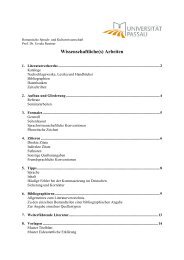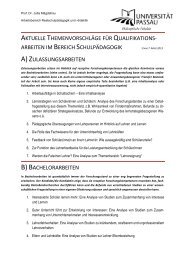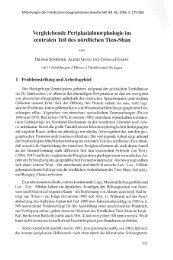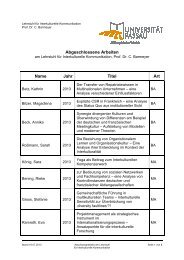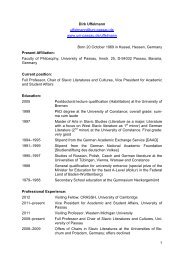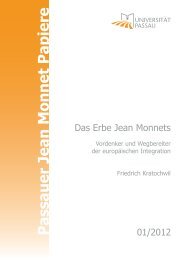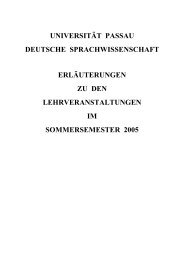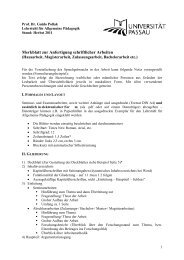The attempt to adopt a mixed-member proportional election system ...
The attempt to adopt a mixed-member proportional election system ...
The attempt to adopt a mixed-member proportional election system ...
You also want an ePaper? Increase the reach of your titles
YUMPU automatically turns print PDFs into web optimized ePapers that Google loves.
23<br />
answered. This was the “Proportionality” (English in the original) that they proposed<br />
(ibid: 102). In other words, the <strong>mixed</strong>-<strong>member</strong> <strong>proportional</strong> <strong>system</strong> would not have<br />
been applied at the national level. Instead, the country would have been divided in<strong>to</strong><br />
four or eight elec<strong>to</strong>ral zones (the German model applied MMP at the state, or Länder,<br />
level), with each zone having twenty or ten <strong>proportional</strong> MPs, respectively. Since the<br />
zones had <strong>to</strong> have roughly the same number of inhabitants, they would also have had<br />
roughly the same number of constituency MPs. In the case of al<strong>to</strong>gether 400 MPs<br />
(320/80) and eight zones, or “groups of provinces,” as they were also called, each<br />
zone would have had 50 MPs, divided in<strong>to</strong> 40 constituency MPs and 10 list MPs. <strong>The</strong><br />
calculation method of the MMP <strong>system</strong> would then be applied separately in each<br />
zone. Jaran also explicitly added a new element <strong>to</strong> the design of the regional zones.<br />
He pointed out that another difference <strong>to</strong> the 1997 <strong>system</strong> would be that candidates on<br />
the party list could—at the same time—be candidates in the constituencies. This<br />
would not be obliga<strong>to</strong>ry; the political parties could decide this by themselves. 33<br />
From the perspective of the MMM (1997 version) advocates, Woothisarn also<br />
tried <strong>to</strong> reconstruct the way their standpoint had developed. He thought that they had<br />
started from the idea <strong>to</strong> reduce the number of MPs <strong>to</strong> 400, without having any party<br />
list, only those from constituencies. Moreover, he re<strong>member</strong>ed that he himself and<br />
Nakharin had said that the party list MPs also had good points, only that the nationallevel<br />
list was problematic. <strong>The</strong>y had worried that party financiers could be fielded,<br />
and then become ministers. Yet, they had already solved this problem by also allowing<br />
constituency MPs <strong>to</strong> be appointed cabinet <strong>member</strong>s (the 1997 constitution stipulated<br />
that ministers had <strong>to</strong> be drawn from the party lists only). “I understand that the<br />
issue of <strong>proportional</strong>ity had not yet crystallized at that time [in Cha-am], and they [its<br />
proponents] had not yet talked about it.” Afterwards, many CDC <strong>member</strong>s had agreed<br />
with keeping the party list, because there had been some debate about its good points.<br />
For example, it enabled capable people, who did not want <strong>to</strong> stand in the constituency<br />
contests, <strong>to</strong> become MPs. This would in turn also strengthen the legislature. “But it<br />
did not yet go as far as the regional <strong>proportional</strong> <strong>system</strong>.” In addition, he thought that<br />
the number of party list MPs only “crystallized” later at their meeting in Bang Saen<br />
CDC 35:94).<br />
Woothisarn’s outline made clear again that the CDC’s starting point was indeed<br />
the 1997 version of the national-level party list. This list was seen as a key flaw<br />
of the 1997 <strong>election</strong> <strong>system</strong>, and the CDC merely set out <strong>to</strong> reform those points the




